
Brief report of two-day Geological Field Trip organised by SPG-APG Delhi chapter
Director (Exploration) Smt. Sushma Rawat envisioned a geological field visit as an opportunity to introduce participants to the practical aspects of field geology. Her vision was aimed at providing participants with hands-on experience to complement their theoretical knowledge and gain a deeper understanding of the geology. Director (Exploration) recognized that understanding the sub-surface geology is crucial for the exploration industry, and that field geology is essential for gaining a better understanding of the underlying geology.
Keeping this in mind, Society of Petroleum Geophysicists (SPG) and Association of Petroleum Geologists (APG),Delhi Chapter joined hands to organize a two-day field visit to the Bayana Basin, Rajasthan with an aim to equip the participants with practical experience that would enable them to better interpret the subsurface geology, ultimately aiding the exploration industry
A total of 48 participants from ONGC, OVL, Indian Oil, Oil India, and Department of Geology, University of Delhi, consisting of Geologists, Geophysicists, Reservoir Engineers, Petrophysicists and Research Scholars joined the field trip. The field trip was flagged off by Shri. JeetendraTikku, Chief Exploration JV Assets & BD from ONGC DUB office to Bharatpur, Rajasthan on 10th March 2023.
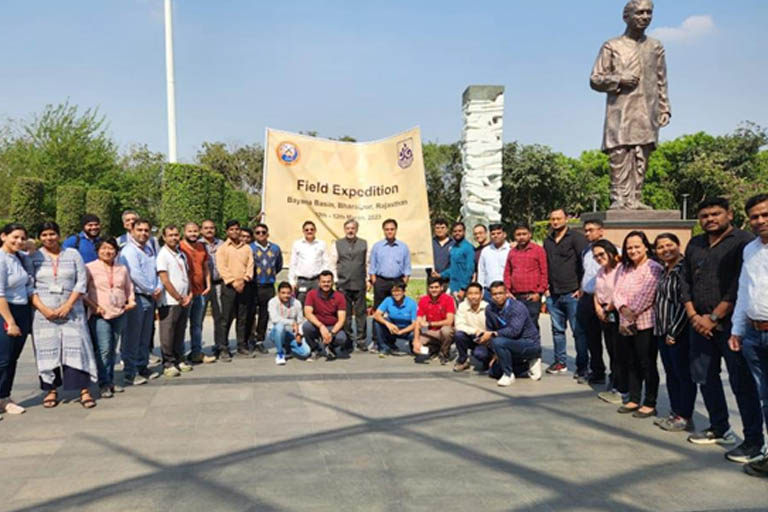
The field trip was guided by Professor ParthaPratim Chakraborty from Department of Geology, University of Delhi,an internationally renowned sedimentologist with expertise in sequence stratigraphy, basin modelling, and petroleum geology. He briefed the participants after reaching Bharatpur and gave a short introduction to Bayana Basin as a part of the pre-field visit.
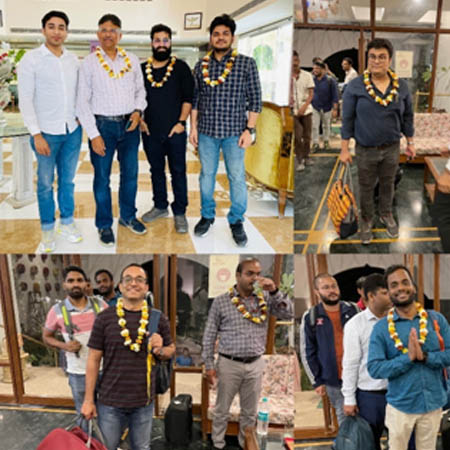

The Bayana Basin located in the north-western part of the Indian peninsula, preserves a Paleoproterozoic litho-package in a riftogenic set-up, less deformed and unmetamorphosed compared to other basins of the North Delhi fold belt. The Basin comprises thick sequence of metavolcanics and metasedimentary rocks belonging to Delhi Supergroup. The deposition of sediments took place in response to vertical tectonism during Middle Proterozoic in fluvial and shallow marine environments.
The rocks are mainly clastics and include conglomerate, sandstoneand shale.The field visit was aimed at exposing participants to products and processes of different sedimentary environments in a Paleoproterozoic rift set-up and map the transition between different environments.
The first stop was at GajipurVillage Section, Bayanawhere the group studied the rock recordsshowing a transition from distal Lower Shoreface to Upper Shoreface environment.

The team next visited the Alapuri Fort Section where they studied the cliff cut exposures of sandstoneranging from lensoid sandstone bodies in the lower part to well-sorted medium- to coarse-grained tabular sandstone beds alternated with thin bedded tabular to broad lenticular medium-grained sandstone, indicating transition to a shoreface environment.
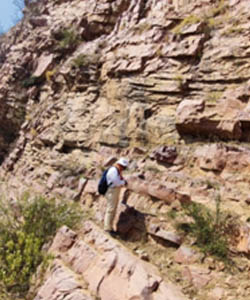
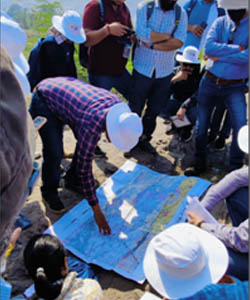

The team then travelled further east where they studied a roadside exposure consisting of alternate conglomerate and sandstone beds showing transition to continental alluvial fan environment.
The following day, the group visited outcrops near Damdama Village to study the imprints of fluvial set upat the top of the succession. The sandstones in this section were very coarse-grained, ill-sorted, and gritty, containing pebble and cobble clasts. Large trough cross-stratification indicated a high-energy gravelly fluvial system. On the way back, the team stopped at Samraya village to study the exposures along a hillside. The sandstones observed here were well-sorted, tabular, amalgamated, and clean, representing a fluvial system.
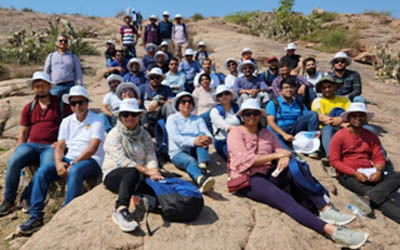
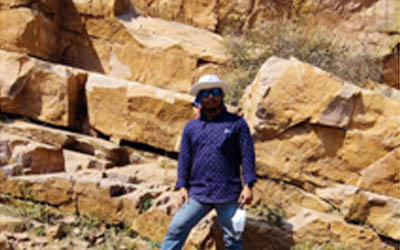
The two-day field visit to the Bayana basin provided an opportunity for the participants to gain hands-on experience in identifying different geological environments and understand the processes associated with it.
The on field experience gained during the excursion will undoubtedly be useful for their respective G&G assignments.
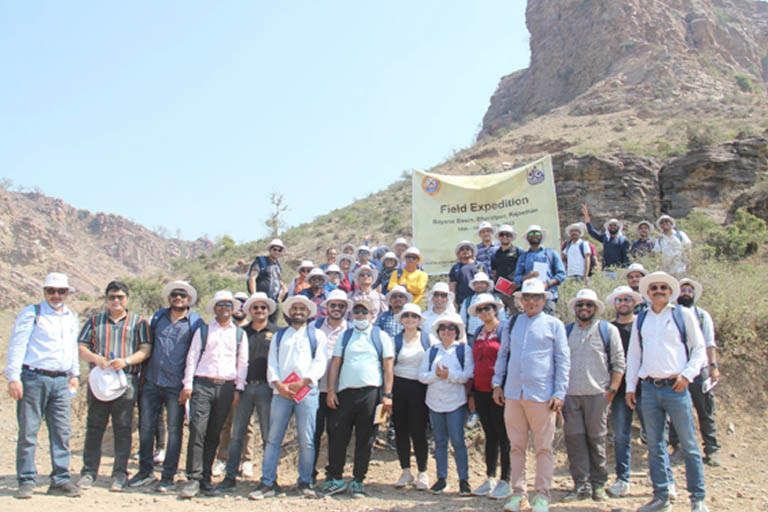
The meticulously planned field workshop would not have been possible without the encouragement of Director (Exploration) and active guidance and support of SPG and APG, Delhi chapters and their respective central bodies.





